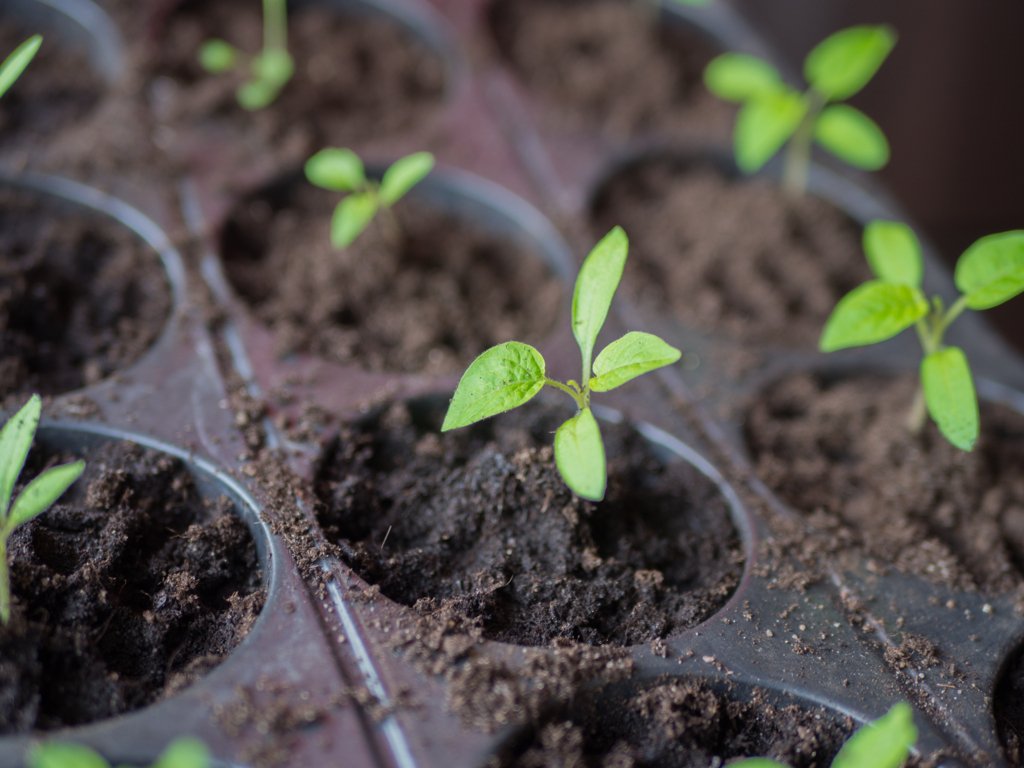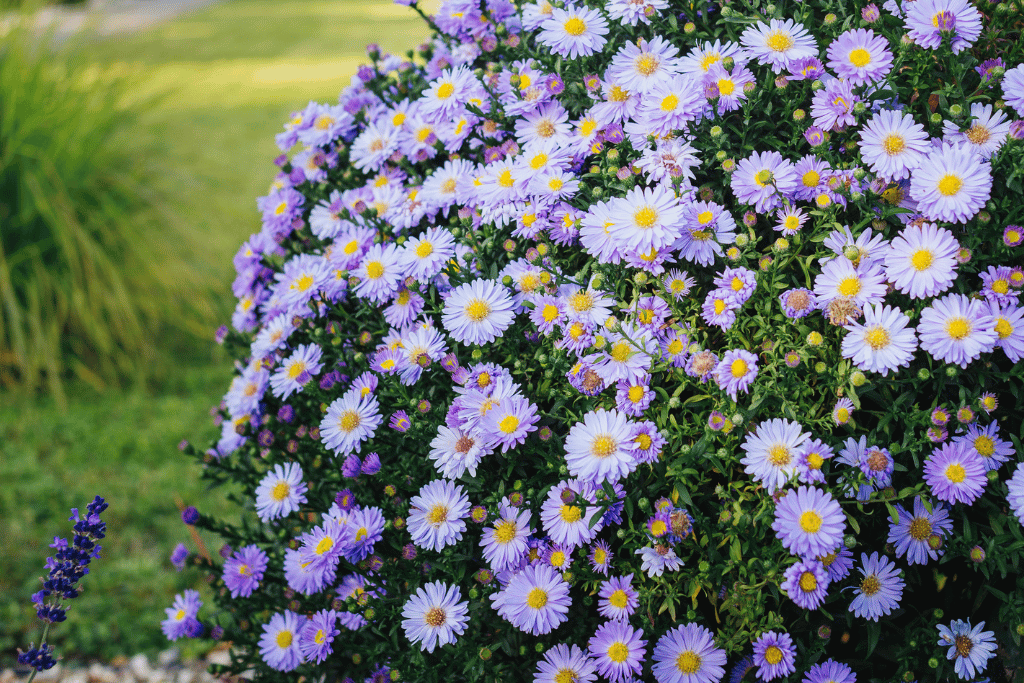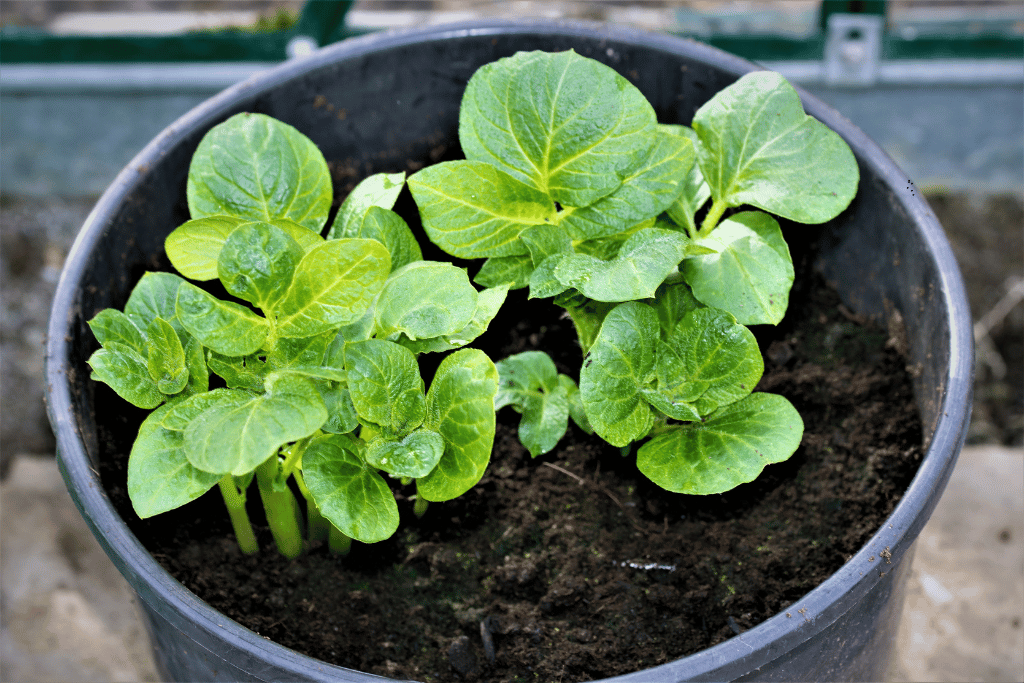Native to Iran, pomegranate trees produce lovely fruits which we all enjoy and that contain masses of seeds called arils. Pomegranate trees can grow anywhere between 20-30 feet tall when mature, but they can also be kept small as bonsai. Growing pomegranate bonsai from seed is straightforward, given the right tools and supplies.
If you are growing pomegranate bonsai from seed, you should note that the seeds will likely not stay true to the variety of the mother tree. If this is a problem for you, then opt for another method, such as cuttings or air layering, which produces a tree that is identical to the variety of the mother tree.

Collecting Pomegranate Seeds
We all enjoy a juicy pomegranate – but you might find yourself wondering if you can grow your own from those masses of seeds! Luckily, you can!
To get the seeds out of the pomegranate, first, get a bowl of water to catch the seeds. Once you have this, cut your pomegranate in half and hold it over the bowl of water.
From here, you’ll need to give a good bit of force to get those seeds out! With something like a wooden spoon, whack the top of the pomegranate hard, and it should drop the seeds into the water. After you’ve got your seeds, you can then wipe off any white membrane and get ready to prepare them for planting!

Preparing the Seeds
Now that you’ve got your seeds, you’ll have to decide what you want to do with them. You can either start them immediately when you collect them or choose to wait until spring after the last frost to plant them. If you’re waiting until spring, then you should stratify them.
Stratification is the process of giving seeds a cold period, simulating winter, which will increase germination in your seeds. To do this, you should first soak the seeds in water for around 24 hours. Discard any seeds that float, and take the rest. You can now place your seeds in a damp paper towel, placing a plastic bag over them for humidity, and keep them in the fridge for a few weeks or until you’re ready to plant them.
Sowing the Seeds
Ready to sow? Let’s do it! If you decided to stratify your seeds, you can now take them out of the refrigerator and get to planting.
Pomegranates prefer acidic, well-draining soil, so consider this when preparing your soil mixture. I like to use a combination of loamy soil, perlite and sharp sand. This is quite a well-draining mix, and I’ve found it works pretty well when growing pomegranate bonsai from seed.
Once you’ve found your optimal soil mix, you can sow the pomegranate seeds. Plant them about 5mm deep, covering them with a thin layer of the soil mix. You should move them to a place with a good amount of sun and ensure that the soil mix stays moist. You can cover the top of the container with plastic wrap to retain humidity, but this isn’t essential.
Within around six weeks, you should see that the pomegranate seeds have begun to sprout. Hopefully, you’ve got lucky and managed to germinate a few, but if you haven’t, you can always plant more. Who knows – maybe you’ll have too many to count within a few years!
Transplanting the Seedlings
If you’ve planted one too many pomegranate seeds in the same space, you might find that they’re getting a bit crowded. Don’t worry, though, this can easily be fixed. Once the pomegranate seedlings have started to produce their true leaves, you can prick them out and transplant them to their own containers.
To do this, gently take the pomegranate seedling out of the soil by digging around it with something like a chopstick. It’ll likely be very easy to get out of the soil, so try to be as gentle as possible and don’t disturb the roots.

You can plant it in its own pot when it’s out of the soil. I wouldn’t recommend planting it in a massive pot immediately, as this will leave it much more prone to overwatering. I don’t recommend planting it in a bonsai pot either, as this will restrict the growth of the seedling, which we don’t want. Instead, opt for a reasonably sized seedling pot.
Growing Pomegranate Bonsai From Seed
In a few months, you’ll find that your pomegranate seedlings might’ve put on a bit of growth. This is an exciting thing – and soon, you might be able to start developing them into bonsai! Give it the proper care and apply the right techniques, and you’ll find that your new tree will explode with growth very soon.
Compared to other species, pomegranate trees can be a bit picky. They need acidic and well-draining soil and also warm temperatures. Unfortunately, they are not frost-resistant, so you must ensure that you give them protection during the winter, as they can only handle a certain degree of frost while in dormancy.
However, a good thing about pomegranates is that they can live for hundreds of years! Many people worry about how long do bonsai trees live, but amazingly, pomegranates will likely outlive us…
You can use many different cultivars of pomegranate trees for bonsai with different characteristics, such as ‘Nana’, which produces smaller fruit with more easily malleable and delicate branches. The ‘Nejikan’ variety is also used, famed for naturally developing a twisted trunk over time, contributing to the appearance of age.
Watering
As I mentioned earlier, pomegranate trees can be pretty picky! When growing pomegranate bonsai from seed, try to avoid using calcareous (hard) water. This can cause problems for species which prefer acidic soil.
Compared to other species, pomegranates can handle a lack of water a lot better than other trees, however you should constantly be watering them whenever the soil starts to dry out. You can test the soil’s moisture by poking your finger an inch deep into it – if it’s soggy, hold off on watering until the soil dries out slightly. If it’s dry, though, make sure you water it thoroughly.
As the pomegranate tree flowers and produces fruit, you’ll find that it will need a lot more water. Make sure to adjust your watering to this, preventing the tree from drying out and making sure it has enough to continue blooming and producing fruit.
Fertilizing
Like many other species, pomegranate bonsai won’t mind an application of either organic or chemical fertilizer. Recently, I’ve begun to use chemical fertilizer instead of organic fertilizer. I’ve found that organic doesn’t usually break down that well and can actually cause the soil to hold a lot more water.
You can use many different brands of fertilizer for pomegranate tree, ranging from top quality Japanese brands such as Naruko and Biogold to any ordinary garden center fertilizer such as MiracleGro. In the growing season, I recommend using fertilizers high in phosphorus and potassium to promote fruit and flower development on pomegranates, rand which reward you with striking blooms and crops of fruit.
However, if you’ve only just started growing pomegranate bonsai from seed, I recommend using a fertilizer higher in nitrogen. While the flowers may be pretty, we want the most green growth out of the seedlings to ensure they get established, and then we can start developing them. I don’t fertilize with seedlings until after their first year, as this can burn their roots if you fertilize too early.
Repotting
Now that you’ve got your seedling in its own pot, you might find that within a few months or a year, the seedling has outgrown its pot. A telltale sign of this is roots emerging from the drainage holes or roots circling themselves multiple times – this means your pomegranate seedling is ‘root-bound’.
When seedlings or trees become root-bound, this can lead to adverse effects. They won’t be able to take up water, and their growth may be restricted. It’s best to repot them as soon as possible, ideally in spring.
To repot your pomegranate bonsai seedling, you should loosen it out of its pot by pushing gently. Once out of the pot, you can take some of the soil off and work the roots a bit; however, keep this minimal as you don’t want to take off a lot of root on seedlings. This can kill them very quickly as they don’t have many.
Once this is completed, you can repot it into a larger pot – at which point you should then water it thoroughly, helping to reduce transplant shock. I like to keep pomegranate seedlings out of direct sunlight after repotting.
Compared to other species, pomegranates aren’t as vigorous. Older trees can be repotted every two to three years in early spring before their leaf buds open, and they are also able to tolerate good root pruning.
When repotting your seedling or tree, ensure that you give it a well-draining mix that is slightly acidic, as pomegranates do much better in acidic soil.
Wiring
Unlike conifers, pomegranate bonsai likely won’t require the use of annealed copper wire. Instead, you can opt for aluminum wire which is a lot easier to work with and beginner-friendly – not to mention it’s a lot cheaper!
With pomegranate seedlings, I don’t like to wire them as soon as they pop out of the ground. Wiring too soon can cause damage to the seedling and halt growth for a while, so I like to wire them after their first year. I’ve found that they are still easily bendable, so there’s no downside to leaving them for a little while before applying your wire.
After their first year, you can get some nice little twists and bends into the trunk of the pomegranate seedling, helping form its structure for when it’s older, which will produce a gnarly trunk.
Further Reading
If you’d like more information on the general care of any seedling and not just pomegranates, you can check out this article in which I discuss it in a bit more detail!
Growing and Caring for Bonsai From Seed
Within a few years, you might have a beautiful pomegranate bonsai tree! You’ll see flowers and fruit covering the tree, from which you can harvest and grow even more (or enjoy for yourself!) Growing pomegranate bonsai from seed is a rewarding process, and hopefully, this article has simplified it for you.
Frequently Asked Questions (FAQ)
How long will it take to develop my pomegranate seedling into a bonsai?
Pomegranate trees can put on around 10-20 inches of growth per year, so it might take approximately 10-20 years for your seedling to be considered an actual bonsai! You can speed this up by methods such as ground planting, which will thicken the trunk considerably in a shorter time. However, you’ll still have to develop the ramification and the branch structure. Make sure to fertilize your seedlings heavily in the growing season, and you’ll be able to get quite a bit of growth out of them.
How often do I need to water my pomegranate seeds?
Once sowed, you should only water your pomegranate seeds when the soil mix starts to dry out slightly. Ensure the soil doesn’t get too soggy or dry, as this can prevent the seeds from germinating or kill any seedlings that manage to pop up. It’s best to check on the seeds every day, especially if they’re in a sunny position.
How long will my pomegranate bonsai tree live?
As mentioned before, pomegranate trees can live for several hundreds of years. A tree will likely outlive you, so it might make a lovely family heirloom! If you give it the proper care and ensure the tree is thriving, it’ll reward you with beautiful blossoms and a long life.
Are pomegranate trees suitable for bonsai?
Yes – they are! Different cultivars have different characteristics, but some, such as ‘Nejikan’, form a twisted trunk naturally. This contributes to the appearance of age in the bonsai, which is what we want! You can experiment with different cultivars or search online for which ones have been tried and tested.



